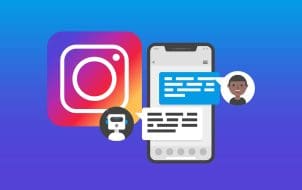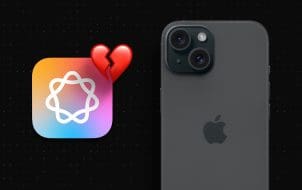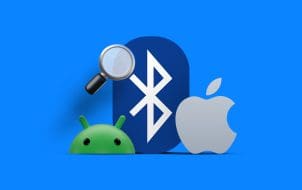Changing your home screen is a great way to add some personal flair to your iPhone. It gives your device a unique look that reflects your personality and interests.
If you want to learn how to change your iPhone home screen, you’re in the right place. This article will explain everything you need to know.
Changing the Home Screen
When it comes to how you want to decorate your home screen wallpaper on your iPhone, you have some options to choose from. You can use a photo from your iPhone’s photo gallery. Alternatively, you can design and build your own using the extensive range of integrated features and templates.
Here are the steps to customize your home screen using a photo:
- Unlock your phone and go to the “Settings” app on your home screen.

- Navigate down the options list and select “Wallpaper.”

- The screen will display an option for both the home screen and the lock screen. Select the Home Screen option by clicking the “Customize” button at the bottom of the home screen image.

- Go to the “Photos” icon on the toolbar at the top of the screen. This will open your photo gallery.

- Choose the photo you want to use and click on it.

- Edit and customize your photo to your liking using the available features.
- Once you’re finished editing, click on “Done” in the top right corner of the screen.

How to Set Your Home and Lock Screen as a Pair
Newer iPhones also have the power to set your home and lock screen as a pair in one single swoop. Therefore, giving your phone a streamlined theme throughout both display screens.
Here’s how to do it using a photo:
- Unlock your phone and go to the “Settings” app on your home screen.

- Navigate down the options list and select “Wallpaper.”

- Click on the “Add New Wallpaper” button.

- Select the “Photos” icon from the options that appear on the toolbar at the top of the screen to open your photo gallery.

- Choose the photo you want to use and click on it.

- Edit and customize your photo to your liking using the available features.

- Once you’re finished editing, click on “Add” in the top right corner of the screen to prompt a pop-up.

- Select “Set as Wallpaper Pair” to set the photo for both your home and lock screens.

How to Create an Emoji Wallpaper
You’re not confined to using one of your photos as your home screen wallpaper, however. Apple has a rich variety of templates and customization features that allow you to translate your individuality onto your iPhone screen. One of these is the Emoji Wallpaper option.
Here’s how to make the most of it:
- Unlock your phone and go to the “Settings” app on your home screen.

- Navigate down the options list and select “Wallpaper.”

- The screen will display an option for both the home screen and the lock screen. Select the Home Screen option by clicking the “Customize” button at the bottom of the home screen image.

- Select the “Emoji” icon from the options that appear on the toolbar at the top of the screen.
- This will automatically open a default emoji wallpaper that you can customize.
- Once you’re finished editing, click on “Add” in the top right corner of the screen to finalize.
Features of Emoji Customization
Emojis are like digital hieroglyphics. We use them to communicate through pictures instead of words. However, you can also create wallpaper for your iPhone home screen using emojis. The level of customization available for emoji wallpapers is truly impressive:
- Multiple Emojis: You can choose up to six different emojis to display on your custom wallpaper.
- Grids: The iPhone also offers a range of different grid options. For example, spiral and ring formations that add flair to your design.
- Color: You can also change the background color that is displayed behind your emojis.
- Widgets: You can also overlay widgets on your home screen. For instance, you can display the weather, battery, etc. Additionally, you can alter the widget’s size and position.
How to Create an Astronomy Wallpaper
As mentioned, Apple has added some unique templates and customization features into the iPhone. Certainly, one of the more dynamic wallpaper options you can utilize is Astronomy, with hyper-realistic depictions.
Additionally, not only can you choose from a range of interesting and visually stunning options but the astronomy feature also adapts to your location. This allows you to view celestial objects from the perspective of your actual location.
Here are the steps:
- Go to the “Settings” app on your home screen.

- Navigate down the options list and select “Wallpaper.”

- The screen will display an option for both the home screen and the lock screen. Select the Home Screen option by clicking the “Add New Wallpaper” button at the bottom of the home screen image.

- Select the “Astronomy” icon from the options that appear on the toolbar at the top of the screen.

- Select “Allow Once” or “Allow While Using App” to give location permission.
- Select your preferred Astronomy template by swiping left.

- Edit and customize to your liking using the available features.

- Once you’re finished editing, click on “Done” in the top right corner of the screen.

- This will prompt a preview screen to finalize.
Note: Unfortunately, the live application of the astronomy wallpaper is only available for your lock screen.
Features of Astronomy Customization
The features of the astronomy wallpaper are literally out of this world. Furthermore, the accuracy of the images is breathtaking. For that reason, they can be a great tool to enhance your phone’s aesthetic.
- Pinpoint Location: This allows you to view your current location visually on Planet Earth on your wallpaper.
- Solar System: You can choose to view the entire solar system on your wallpaper. This feature allows you to see the planets in their current orbit location relative to Earth.
- Planets: There is also an option to use beautifully rendered depictions of the individual planets in our solar system. For instance, Mars, Jupiter, Saturn, etc.
- Earth and Moon: There is an option to use accurate and detailed depictions of the Earth and Moon.
Note: To utilize planets other than Earth you will need iOS 17.
Additional Customization Features
If the host of wallpaper options available by the iPhone wasn’t enough already there are even more customization features you can use:
- Color: The iPhone offers the entire spectrum of color and gradient options to apply to your wallpaper.
- Weather: There are a host of impeccably designed weather templates to choose from. Furthermore, they can be set to reflect the live weather conditions of your current location.
- Photo Editing: You can edit your photo-based wallpapers with the entire iPhone photo editing arsenal.
FAQs
Can you change your iPhone home screen from the lock screen?
Yes, the latest version of Apple’s trademark iOS lets you change your home screen wallpaper without even unlocking your phone. This useful new feature makes the task extra convenient. The wallpapers can be paired or different for your home and lock screens, depending on what suits your taste. However, in order to use this function, you will have to set up face recognition.
Create a Masterpiece
Apple has always been at the forefront of innovation and its wallpaper features are no exception. Better still, it’s a straightforward process to set it up and customize it for your home screen. This way, you can have a unique home screen to match your personality and interests. Have you ever changed the home screen on your iPhone? If so, did you use any of the tips and tricks discussed in this article? Let us know in the comments section below
Disclaimer: Some pages on this site may include an affiliate link. This does not effect our editorial in any way.


















